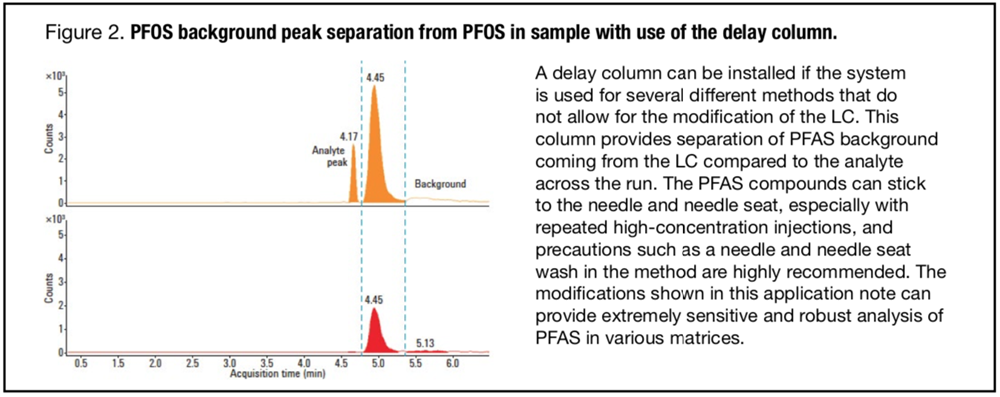Posted by Chrom Tech on 7th Nov 2025
Reduce PFAS Background Interference and Contamination
According to the EPA, per- and polyfluoroalkyl substances (PFAS) are persistent in both the environment and the human body, and prolonged exposure may lead to adverse health outcomes. Also referred to as perfluorinated compounds (PFCs), PFAS are found in food packaging, household products, industrial workplaces, drinking water, and even within living organisms.
PFAS compounds consist of alkyl chains where some or all hydrogen atoms are replaced with fluorine, giving them unique chemical stability and resistance to heat, water, and oil. These characteristics make PFAS highly useful in industrial and consumer applications—but they also make them extremely difficult to remove from the environment. This widespread use has driven global concern and the need for sensitive analytical methods to detect and quantify PFAS contamination.
Understanding the Regulatory Landscape
Common PFAS such as perfluorooctanoic acid (PFOA) and perfluorooctane sulfonic acid (PFOS) have been detected in water, soil, sludge, and biota at concentrations as low as parts per trillion (ppt). The U.S. EPA has issued a combined drinking water health advisory for PFOA and PFOS at 70 ng/L. Additionally, several states—including New Jersey, New York, and North Carolina—have established public health guideline values ranging from 20–400 ng/L for multiple PFAS compounds, including PFHxA and PFNA.
Identifying and Preventing PFAS Contamination Sources
Agilent reports that PFAS can infiltrate the analytical process through contamination in solvents, tubing, filters, and instrument components. Because PTFE (polytetrafluoroethylene) is commonly used in (U)HPLC systems, it represents a frequent and often overlooked source of PFAS background interference.
To mitigate these risks, Agilent developed specialized solutions designed to minimize PFAS background noise and contamination within analytical workflows. Chrom Tech supports these best practices by offering equipment, replacement parts, and consumables optimized for low-background PFAS analysis, enabling laboratories to maintain cleaner baselines and more accurate quantification results.
Reducing Background Interference in Agilent LC Systems
In both the Agilent 1260 Infinity II and Agilent 1290 Infinity II LC systems, careful selection of PFAS-free components and solvents can dramatically reduce contamination risk. Chrom Tech provides guidance and supplies designed for PFAS testing environments, including tubing, fittings, and solvent containment solutions verified for low background interference.


Chrom Tech: Your Partner in PFAS Analysis
Chrom Tech is a Minnesota-based global distributor of chromatography and mass spectrometry instrumentation and consumables. We offer HPLC vials, well plates, syringe filters, solvent waste containers, and other critical components to support sensitive PFAS detection workflows. Contact Chrom Tech to discuss PFAS-free consumables and contamination control strategies for your laboratory.
Your one-stop resource for all Agilent LC replacement parts—click through to the main page today.
Frequently Asked Questions
What are PFAS compounds, and why are they difficult to analyze?
PFAS are fluorinated organic chemicals that resist degradation due to strong carbon–fluorine bonds. Their widespread industrial use and persistence make them challenging to remove and detect at low concentrations, often requiring specialized LC-MS/MS methods and PFAS-free components.
How can laboratories minimize PFAS background contamination?
Labs can minimize contamination by avoiding PTFE materials, using PFAS-free solvents and filters, and following validated cleaning protocols. Agilent and Chrom Tech offer low-background components and system configurations optimized for PFAS analysis.
Why are Agilent Infinity II systems recommended for PFAS analysis?
Agilent Infinity II LC systems support ultra-low detection limits when equipped with PFAS-free components and verified tubing assemblies, allowing for precise quantitation of PFOA, PFOS, and related analytes at trace levels.

